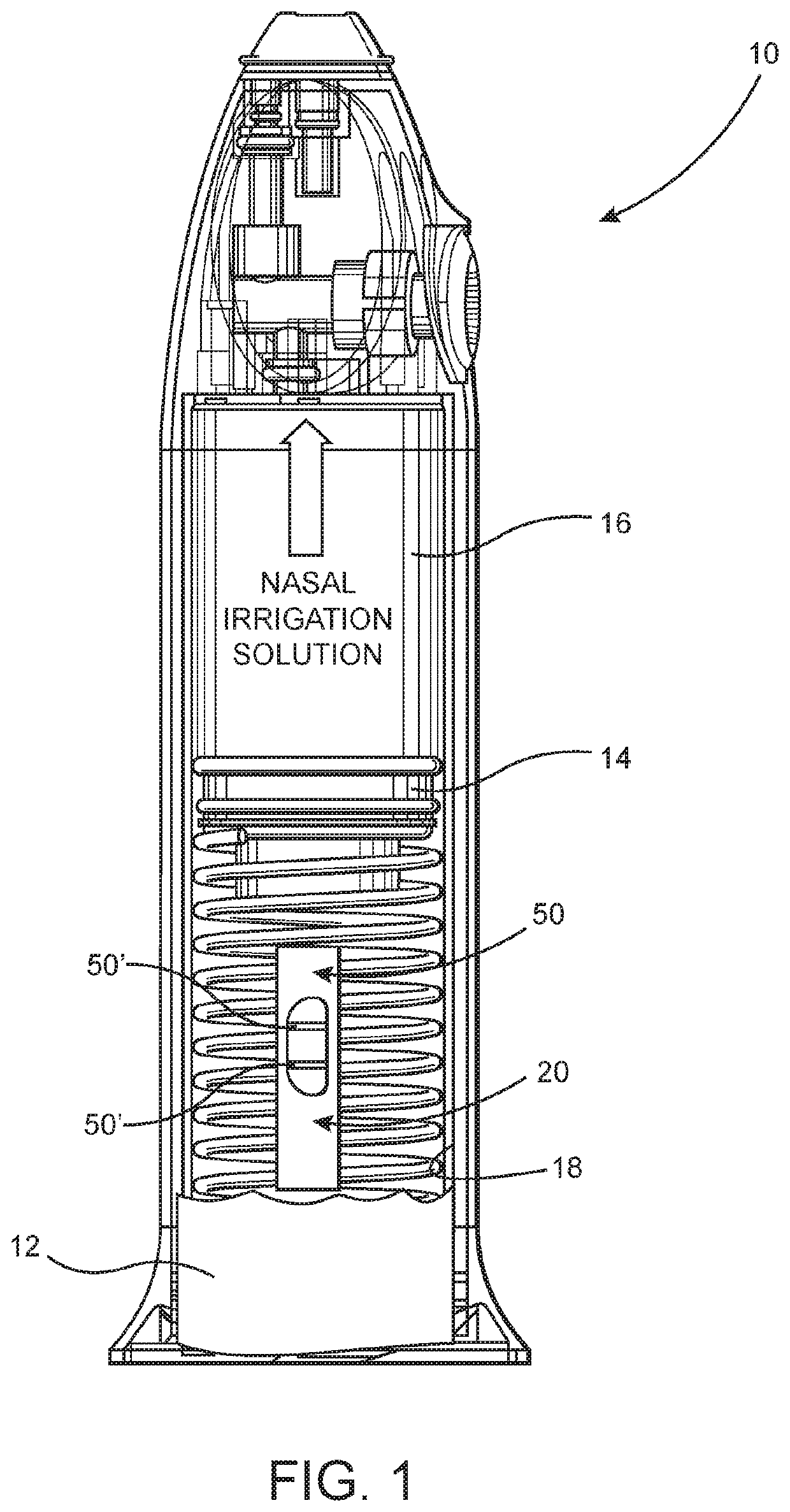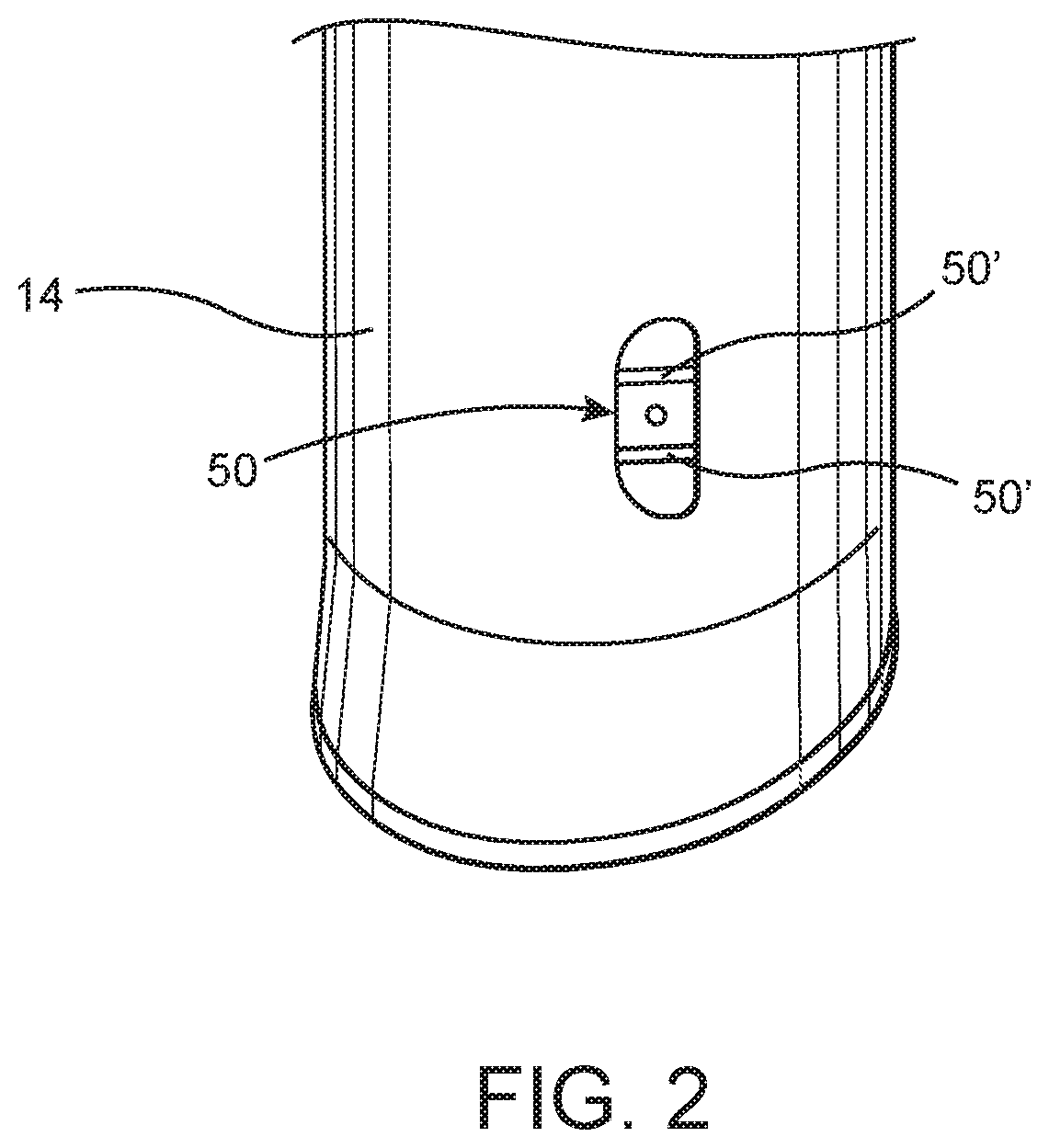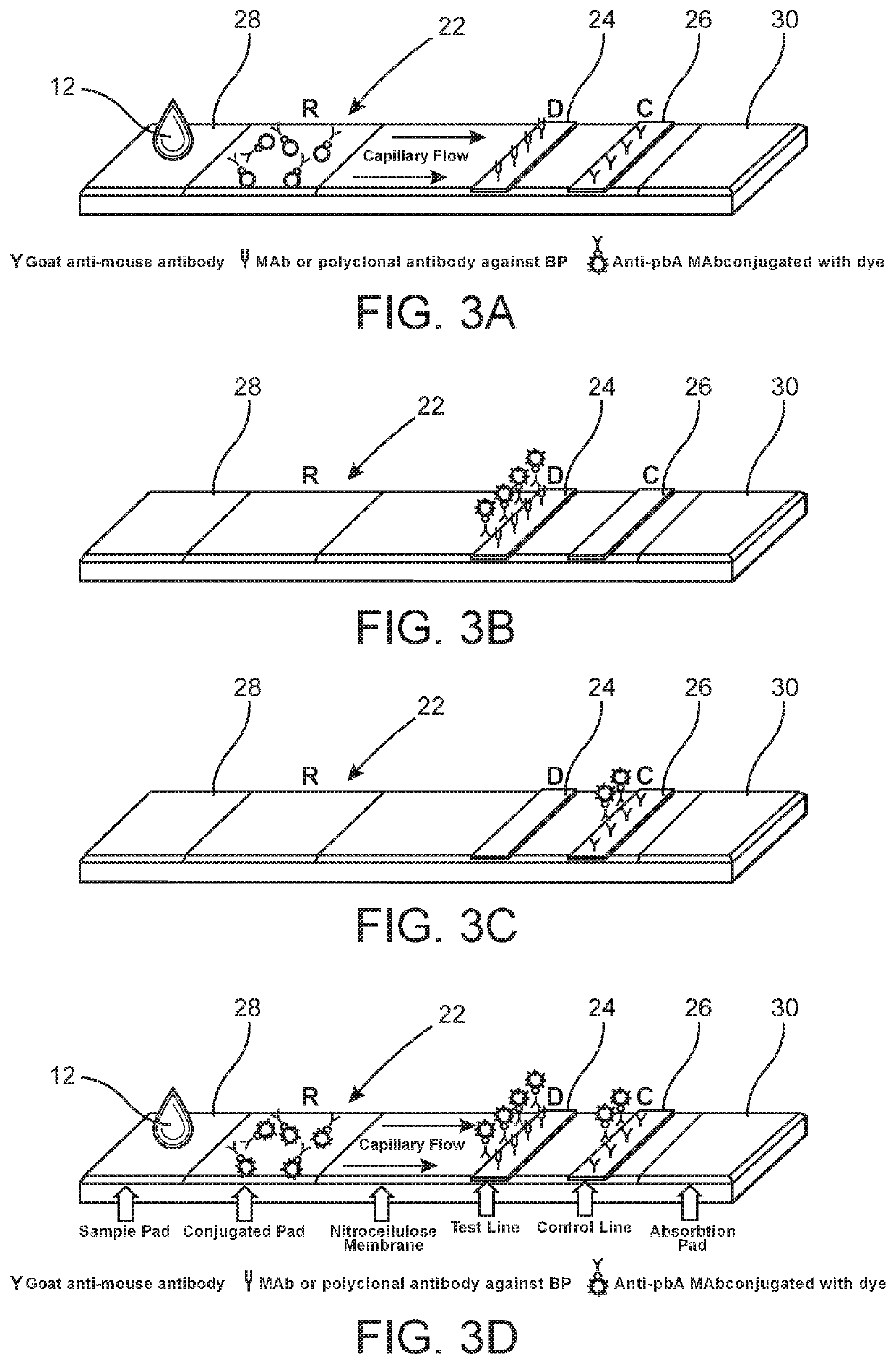Nasal irrigation diagnostic assembly
a technology for diagnosing and identifying nasal pathology, applied in the field of nasal irrigation diagnostic assembly, can solve the problems of poor nasal hygiene, nasal and sinus disease, and medications used to treat nasal pathology inherently include potential side effects and may be excessively expensiv
- Summary
- Abstract
- Description
- Claims
- Application Information
AI Technical Summary
Benefits of technology
Problems solved by technology
Method used
Image
Examples
Embodiment Construction
[0034]The present invention is directed to a nasal irrigation diagnostic assembly, generally indicated as 10, which provides for effective infectious disease detection through the analysis of a biological sample, in the form of aspirate or waste solution, retrieved and retained by the nasal irrigation device from the nasopharyngeal cavity, as a result of the irrigation of the nasopharyngeal cavity.
[0035]Moreover, the nasal irrigation diagnostic assembly 10 of the present invention accomplishes the cleaning, through irrigation, of the nasal cavity of particulate, bacterial and viral matter and can be easily, comfortably and efficiently used by non-medical individuals. In use, the diagnostic assembly 10 serves to detect the existence of one or more analyte species, with high sensitivity and specificity, in a biological sample at least partially defined by or in the form of the nasal waste solution 12. Further, the nasal irrigation diagnostic assembly 10 is operative to generate reliab...
PUM
| Property | Measurement | Unit |
|---|---|---|
| volumes | aaaaa | aaaaa |
| color change | aaaaa | aaaaa |
| volume | aaaaa | aaaaa |
Abstract
Description
Claims
Application Information
 Login to View More
Login to View More - R&D
- Intellectual Property
- Life Sciences
- Materials
- Tech Scout
- Unparalleled Data Quality
- Higher Quality Content
- 60% Fewer Hallucinations
Browse by: Latest US Patents, China's latest patents, Technical Efficacy Thesaurus, Application Domain, Technology Topic, Popular Technical Reports.
© 2025 PatSnap. All rights reserved.Legal|Privacy policy|Modern Slavery Act Transparency Statement|Sitemap|About US| Contact US: help@patsnap.com



